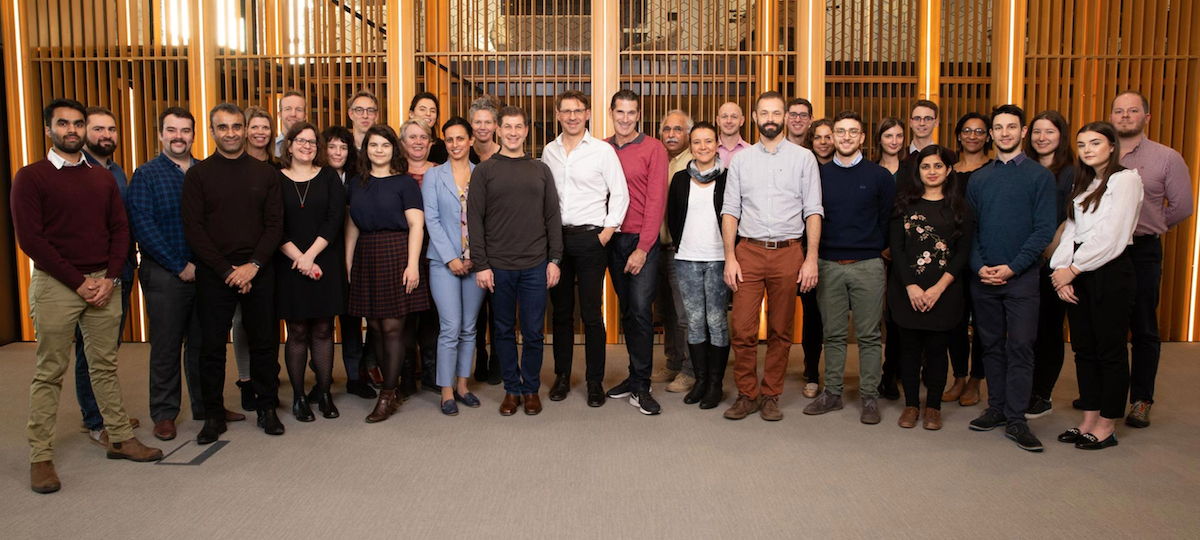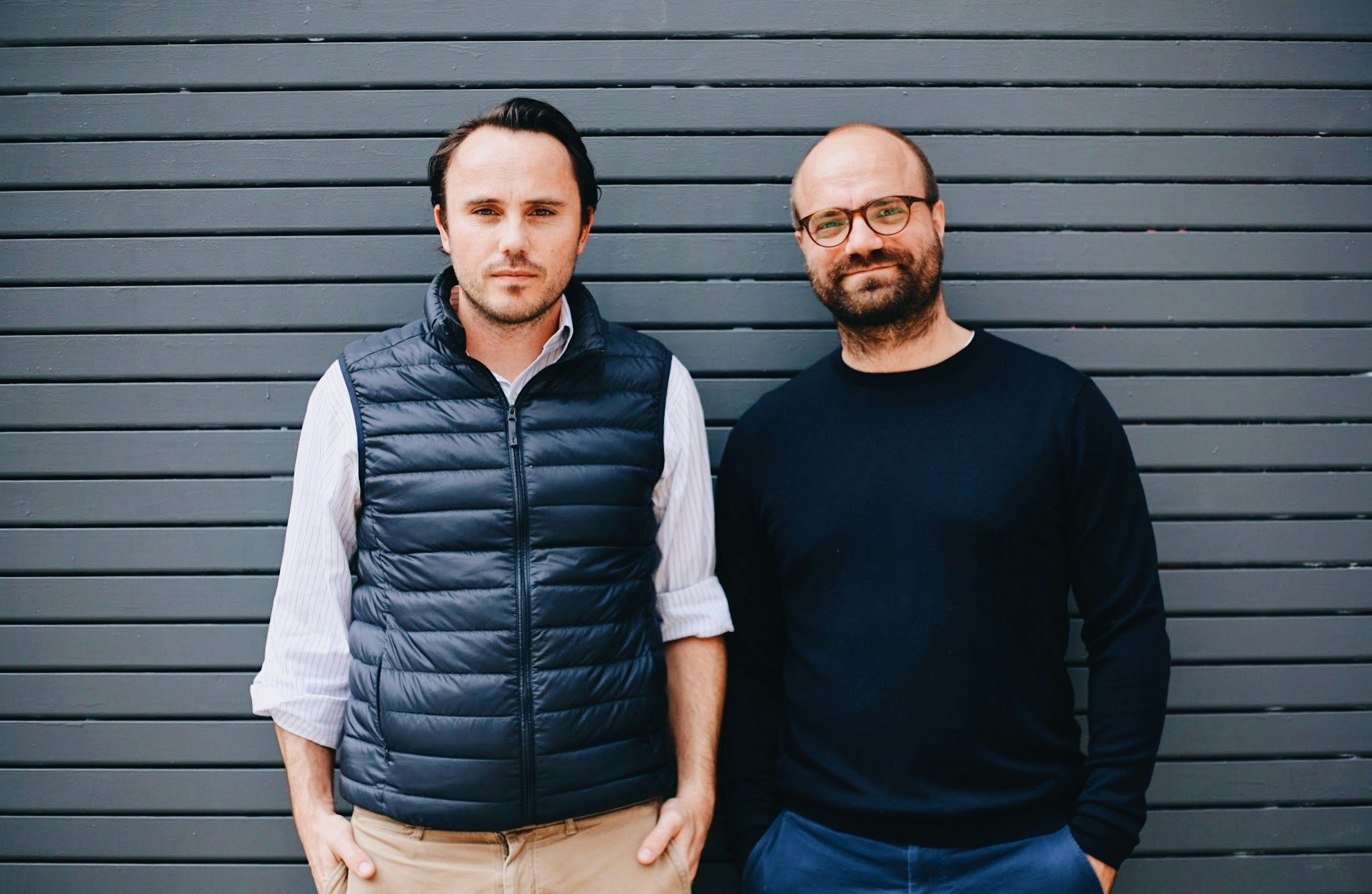In the past decade, Europe has become home to a bunch of digital consultation apps for patients and medical professionals alike.
In 2018, the European Commission said that the telemedicine market could be worth a whopping €37bn by 2021. It’s probably revising that forecast now, after a surge in telemedicine app adoption during the coronavirus pandemic.
In pre-lockdown Britain, online consultations counted for about 1% of annual visits to primary care doctors and nurses, but between March and July this year, half of the 102m consultations carried out were by phone or video.
The road to digital is looking rosy for now — but as lockdowns somewhat ease around Europe, will patients want to revert to the old ways of seeing their GPs, nurses and psychologists? And what systems need to be put in place to ensure that digital healthcare works for clinicians and patients alike?

Earlier this week, Sifted joined forces with the British Embassy Sweden to hold a panel on the future of digital healthcare. We were joined by Livia Holm, director of policy at digital health leader Kry (Livi), Dr Harpreet Sood, NHS doctor and digital advisor, Jacob Haddad, cofounder of GP practice communication platform accuRx and Martin Lindman, chief executive at digital health company Doktor.se.
Here are the highlights of the discussion:
1. Digital isn’t a great option for everyone
Digital consultations have brought heaps of perks — they’re cost-effective and can save doctors and patients time — but they don’t work for everyone.
From a doctor’s perspective, Dr Sood says that the rapid shift to digital made his job easier for the most part — but brought some complexities. “I’ve never been trained to remotely consult my patients as a GP. My responsibility is to manage risk and manage uncertainty, and I can't often do that well if I don't have the full information in my hand, or if I can't see the patient to understand certain behaviours like non verbal cues,” he says.
Some patients can’t come into a GP — and not everyone has unlimited access to data and WiFi.
That convenience isn’t shared by all patients, though — and digital health tools now need to figure out how to work for everybody who might need care. “Some patients can’t come into a GP. Also, not everyone has unlimited access to data and WiFi,” points out Dr Sood.
“[One patient] said to me, ‘Look, I’m okay coming in [to the GP] — I don’t want to use up all my data consulting with the doctor because I want to speak to my family in Bangladesh,’ and it made me realise that people have these protective characteristics that we take for granted. It’s not for everyone.”
Livi and Doktor.se think the future of healthcare will consist of a mix of physical and digital consultations — and both companies have already opened healthcare centres in Sweden to complement their digital services.
“We will see a recalibration [of online and offline care]; in fact, we are already seeing it,” adds Dr Sood. “But we don’t know what that measure is at the moment. [Digital is] going to stay, but we’ll go through a few iterations before we hit the sweet spot.”
2. Don’t digitalise for the sake of it
As glamorous as the idea of a mass digital healthcare overhaul seems, Holm points out that we shouldn’t get too carried away. She hopes that ecosystem players focus on scaling only necessary digital healthcare products. “It’s not about ‘should we go digital?’ It’s about ‘what should go digital?’ And how we can use these tools to provide better cost-efficient care in the future,” she says.
It’s not about ‘should we go digital?’ It’s about ‘what should go digital?’
Lindman agrees, stressing that ultimately it’s not about the tech. The main goal, he says, is to “manage risk, understand the patient’s symptoms and assess the care level to give proper treatment.”
Digital consultations could just be the first stage for a patient. “It’s about leading the patient on an effortless journey, depending on what the patient is looking for, what the patient’s symptoms are and what care level they need,” says Lindman. “The first consultation might be digital… but quite a few of our patients will need some sort of physical consultation after a while.”
3. Healthcare consumerism will continue to expand
Consumers are increasingly taking charge of their healthcare needs as more consumer-based healthcare technology and apps become available.
Dr Sood sees benefits in increased healthcare consumerism for both the clinician and the patient. “If we have sophisticated tools that allow us to do things like self care and pre-primary care, it’ll make everyone work better; the patient gets what they need when it’s convenient for them, which in turn allows for increased productivity for the clinician consulting.”
Healthcare systems could also save money if consumers start taking the wheel too. There are heaps of apps which can help people monitor their health at home, made by the likes of French healthcare device company Withings, which could lead to a decrease in visits to doctors and nurses.
4. Make sure the system is accessible for all
But for a healthcare system to reap real benefits from patients self-diagnosing or monitoring their own health, it will need to make sure the relevant tools are available to everyone.
Not every individual will have access to essential tools to track health, like a thermometer or a blood pressure monitor, says Haddad. “We need to make sure that patients have tools such as thermometers to deal with the basics before they start self tracking [their health],” he says.
An alternative is to bring these tools closer to patients. Some areas suffer from a lack of GPs and therefore individuals have to travel longer distances to get tests. But building more GP surgeries isn’t the answer, says Dr Sood.
“Would I build the number of GP practices we have in the UK? Probably not, because I think we can have an interesting model where you can actually do a lot in people’s homes, in the community, and only bring [necessary] patients in to be seen,” he says.
Holm agrees; healthcare can — and should — be more dispersed. Sweden’s municipalities are in talks to transform buildings that are being shut down into places where citizens can go to carry out blood pressure monitoring, as well as other healthcare checks that can be self-administered easily.
5. Healthcare services will only continue to diversify, if deregulation allows it
If the model of ‘going to your GP’ gets shelved, what will happen?
Holm believes that patients will start developing new behaviours by responding to what’s in the market, in turn affecting the way in which healthcare is delivered in the public system. “We will see a massive diversification of services,” she says.
But in order to tap into broader services, numerous barriers need to be broken such as systems being built around the model of small local GP clinics, legacy IT systems and infrastructure and the reimbursement structure for clinics.
“Us digital providers have a large responsibility in working together with the public health services and local authorities to ensure that we can transition into a sort of positive change... that means removing lots of these barriers moving forward that are currently slowing down the pace,” says Holm.
6. Let users be choosers
If consumers are going to take more control over their health monitoring, then the products that they use better be top notch. Digital — and physical — innovations aren’t going to take off if the user doesn’t benefit from them.
Haddad thinks it’s imperative that end users have a say in what products work. At the moment, this isn’t really the case in the UK, where policymakers and healthcare leaders control decisions. “You can tick a box in many different ways, and that’s where a lot of software doesn’t work as it fails to meet end user requirements,” he says. “When users are choosers, they’ll pick up the right things and they will take off."
When users are choosers, they’ll pick up the right things and they will take off.
Lindman agrees. “It will be [patients] using devices, getting information and doing home tests. Development is not going to come from the inside [GPs], it’s going to be driven by development like communication tech between doctors and patients.”
7. Policymakers and practices seem open to change
Holm says that she’s noticed more “excitement and optimism” among policymakers. They’re enthusiastic about this shift to digital healthcare, which is happening a lot faster than expected (in a few months rather than a few years), and are potentially opening up to fresh opportunities.
“There's definitely momentum and there's definitely an optimistic view of the pace in which we can now transform our systems to cope with these challenges that they've been facing for a long time now,” she says.
Haddad adds that, among practitioners, experimentation has also become a topic of discussion: “Practices are keen to try out new things; it’s nice in general for the sector to debunk the myth of healthcare being bad at adopting intuitive tech.”
8. Startups, don’t cut corners
Amid all this noise in the digital health space, what’s the best next move for startups in the sector?
While founders might be tempted to hyperscale their healthcare solutions, Dr Sood advises them not to take any shortcuts — patience is key.
My advice to a lot of startups is don't cut corners.
“My advice to a lot of startups is don't cut corners. Do things the right way, because ultimately if you just speed to the market that you want to get to, you’ll end up coming up short on other things along the way — whether it’s trust, privacy, security, governance, accountability — all these things matter if you want to succeed. The only way to do it is by grafting hard, and that takes time,” he says.
9. What’s next?
For healthtech policymakers, Holm says that the next step is to think about the long-term implications of the digital services being pushed in the sector: “How can we ensure through policy that in five years time patients can get monitored by the clinician in a safe and effective way? That's the type of stuff we need to be thinking about.”
Dr Sood thinks that healthtech will become more decentralised: “We’re going to see that our system is too centralised. We would like to see a more decentralised system that allows the autonomy to do exactly what you want.”
This talk was proudly supported by British Embassy Sweden. You can find out more about how the Embassy supports Swedish companies wishing to get a foothold in the UK market here.



